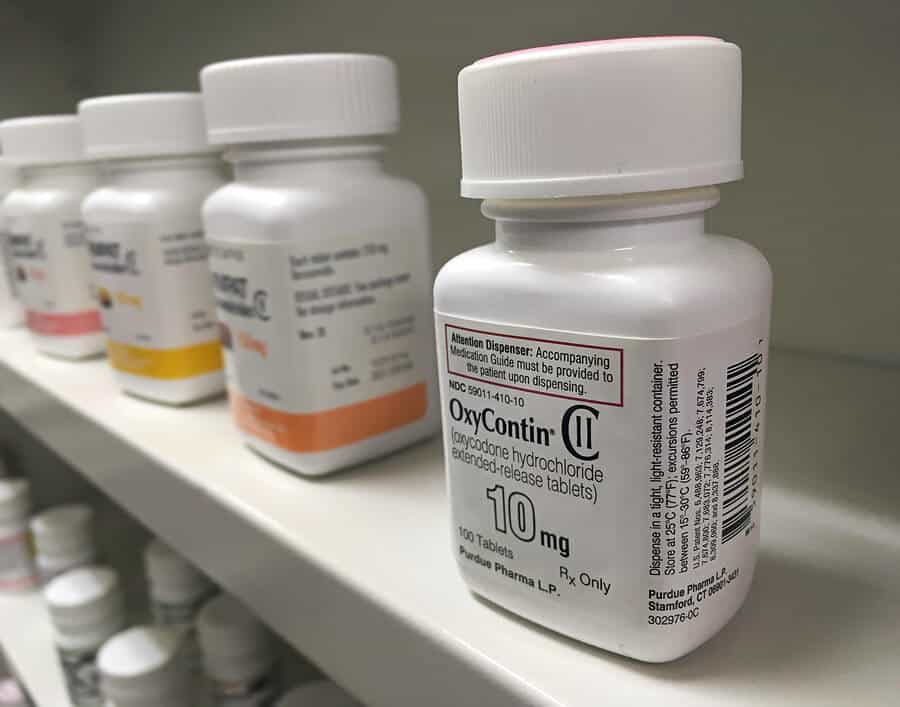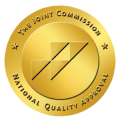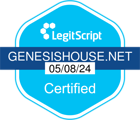Opioids fall into the category of narcotic pain medications. If not taken correctly, they can produce serious side effects, including addiction. The body has the ability to produce natural opioids, but when considerable pain relief is necessary, these medications may be prescribed. They work by attaching to pain receptors in the brain, spinal cord, and digestive tract. These receptors are known as opioid receptors and are part of the system that controls behaviors related to pain, reward, and addiction. Prescription opioids mimic our bodies’ natural neurotransmitters and when attached to these receptors, flood the brain with dopamine.
Dopamine is the neurotransmitter responsible for thinking, emotion, and feelings of pleasure. Because prescription opioids are present in such large quantities, they create over-stimulation in the brain. This leads to the reward-seeking behavior exhibited by those who have developed a dependence on these substances. Being aware of what medications are opioids is imperative, which is why the following opioid drug list is helpful.
Opioid Drug List
•Abstral, Actiq (fentanyl)
•Avinza (morphine sulfate)
•Demerol
•Butrans
•Dilaudid (hydromorphone)
•Dolophine (methadone)
•Duragesic (fentanyl)
•Fentora (fentanyl)
•Hysingla (hyrocodone)
•Methadose (methadone)
•Morphabond (morphine)
•Nucynta ER (tapentadol)
•Oxaydo (oxycodone)
•Oramorph (morphine)
•Onsolis (fentanyl)
•Roxanol-T (morphine)
•Sublimaze (fentanyl)
•Xtampza ER (oxycodone)
•Zohydro ER (hydrocodone)
•Anexsia (hydrocodone/acetaminophen)
•Co-Gesic (hydrocodone/acetaminophen)
•Embeda (morphine/naltrexone)
•Exalgo (hydromorphone hydrochloride)
•Hycet (hydrocodone/acetaminophen)
•Hycodan (hydrocodone/homatropine)
•Hydromet (hydrocodone/homatropine)
•Ibudone (hydrocodone/ibuprofen)
•Kadian (morphine sulfate)
•Liquicet (hydrocodone/acetaminophen)
•Lorcet (hydrocodone/acetaminophen)
•Lortab (hydrocodone/acetaminophen)
•Maxidone (hydrocodone/acetaminophen)
•Norco (hydrocodone/acetaminophen)
•OxyContin (oxycodone hydrochloride)
•Oxycet (oxycodone/acetaminophen)
•Palladone (hydromorphone hydrochloride)
•Percocet (oxycodone/acetaminophen
•Percodan (oxycodone/aspirin)
•Reprexain (hydrocodone/ibuprofen)
•Rezira (hydrocodone/pseudoephedrine)
•Roxicet (oxycodone/acetaminophen)
•Targiniq ER (oxycodone/naloxone)
•TussiCaps and Tussionex (hydrocodone/chlorpheniramine)
•Tylenol #3 and #4 (codeine/acetaminophen)
•Vicodin (hydrocodone/acetaminophen)
•Vicoprofen (hydrocodone/ibuprofen)
•Vituz (hydrocodone/chlorpheniramine)
•Xartemis XR ( oxycodone/acetaminophen)
•Xodol (hydrocodone/acetaminophen)
•Zolvit (hydrocodone/acetaminophen)
•Zutripro (hydrocodone/chlorpheniramine/pseudoephedrine)
•Zydone (hydrocodone/acetaminophen)
Help For Opioid Drug Addiction
With the need for information regarding this opioid drug list in mind, we want to encourage those who need help to get help now. Here, we want to tell you about the treatment process. Hopefully, this will put your mind at ease and let you know what to expect. Much of our focus is going to be placed on the detox process and the use of detox medications.
When the right treatment facility is located based on the patients needs, the client will likely go through an intake interview. The facility’s clinician is simply gathering information about the addiction profile. From this profile, they should be able to determine the proper course of treatment.
Opioid Withdrawal Symptoms
While therapy and aftercare are important aspects of treatment, it’s all predicated on the addiction sufferer successfully getting past withdrawal and their cravings. It would be a mistake to underestimate the importance of a detox program, especially for someone with an addiction to opioids. Remember, the withdrawal symptoms associated with opioid addiction can be quite dangerous. We are talking about symptoms such as:
- Respiratory and circulatory issues
- Severe muscle spasms in the stomach and extremity regions
- Psychological issues such as anxiety and depression
- Nausea, vomiting and diarrhea
- Sleeping issues
Opioid Detox Programs
The point of a detox program is to help clients get through these withdrawal symptoms with a minimum of discomfort. If the client does encounter discomfort, the detox facility’s medical staff has the option to prescribe certain medications for relief.
That brings us to a very serious discussion. There are times when a client enters rehab with a very significant addiction to an opioid substance. If the addiction is deep-rooted enough, a standard detox program might not suffice as far as keeping the client safe. That’s when a tapering program becomes the best solution. In a tapering program, a doctor will prescribe medications like Suboxone or Methadone to help ease the client away from their addiction. The process could take weeks instead of months, but it’s necessary for the welfare of the client.
Unfortunately, tapering medications are derivatives of the substances being treated. That makes them addictive. That raises an important question: “Who Is At Risk of Abusing Opioid Medications?” The short answer is anyone who misuses the prescribed medications.
Given the fact these drugs are addictive unto themselves, they must be taken as the doctor prescribes. The doctor’s job is to monitor the client’s progress to assure everything is going as the doctor planned. If the client takes larger doses or takes a tapering drug more often than prescribed, it’s substance abuse. As you can imagine, substituting one addiction for another is not good. The client is obligated to follow the doctor’s instructions or risk further problems.
After going through a detox program, the client should be ready for the rest of the treatment process.
Addiction Therapy
Therapy is the meat and potatoes of opioid addiction treatment. This is the opportunity for the client to identify the personal issues that are driving their desire to hide behind a harmful substance. To get to that point, the client has to be willing to speak openly and honestly with the therapist. With the therapist’s direction, the real issues should become apparent.
After identifying the issues at hand, the client has the opportunity to develop very specific coping skills they can use to combat their problems. With the right coping skills, relapses can be avoided.
Aftercare Programs
After the client has completed treatment, they have to leave rehab and begin living life on life’s terms. The good news is they don’t have to do that alone. The rehab facility should be able to offer them access to aftercare programs the client can use as support resources. The best support resources include outpatient counseling, sober living options and 12-Step meetings.
If you or a loved one are experiencing opioid dependence on any of these substances, our understanding counselors can help. If you are ready to speak to someone, we are available 24 hours a day, 7 days a week. Don’t hesitate to call us at 844-903-2111









